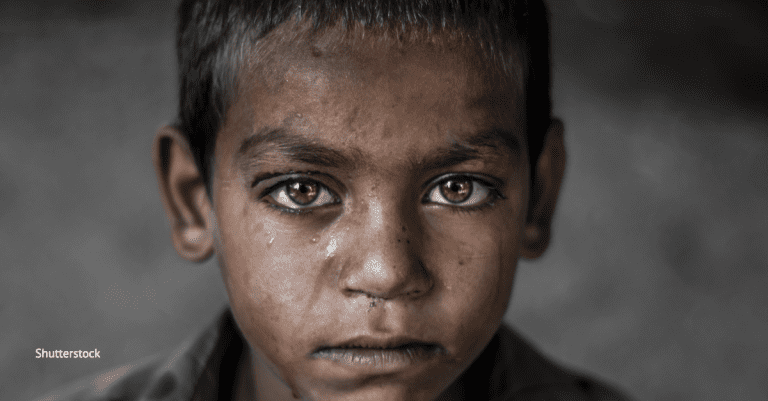
Psalm 10:17-18 You will incline Your ear: To vindicate the orphan and the oppressed, So that man who is of the earth will no longer cause terror.
I suspect that many Christians take comfort in reading such statements. God rises up to defend the oppressed! “Yea, God!”
I have been writing on race and justice for the past seven posts. One reason for such an extensive expose into the issue is the fact that, in my estimation, many White evangelicals are simply not aware of the gravity of the issues, nor their own complicity. I know I wasn’t.
Sure, the advent of the cell phone camera has brought to light some of the examples of police brutality encountered by people of color. The issues, however, are far deeper and far more pervasive than I ever imagined, and I am sure most White evangelicals are aware.
In this post, I intend to note that many of the racial injustices that confront people of color begin with the disparities in our educational system.
In saying this, I suspect that many readers may not see the need to read further: “after all” they might respond, “what does this have to do with me?”
Everything!
To begin, I’d like to present two facts:
- God answers the pleas of the oppressed by calling His people to action
When injustice is found in a society God calls His people to intercede. (Of course, this does not have to mean that everyone is involved in every issue. It means that injustices are church issues).
There is little question that throughout the Bible God uses, or desires to use, His people to be the means through which the oppressed are set free. For the sake of space, I will be brief on this point.[1]
The easiest justification for this point is found in the call of Moses. In Exodus 2 we learn that:
“the sons of Israel sighed because of the bondage, and they cried out; and their cry for help because of their bondage rose up to God. So God heard their groaning; and God remembered His covenant with Abraham, Isaac, and Jacob. God saw the sons of Israel, and God took notice of them (Exod 2:23-25).
The very next verse, which is often obscured by the chapter break, introduces us to God’s solution:
“Now Moses was pasturing the flock of Jethro . . .” (Exod 3:1).
In case we fail to see the connection, the narrative makes it clear: the call of Moses was God’s solution to the cry of the oppressed:
“I have surely seen the affliction of My people who are in Egypt, and have given heed to their cry . . . . I am aware of their sufferings. So I have come down to deliver them. . . . Now, behold, the cry of the sons of Israel has come to Me; furthermore, I have seen the oppression with which the Egyptians are oppressing them. Therefore, come now, and I will send you to Pharaoh” (Exod 3:7-10).
The biblical mission for the people of God is to be the means through which God brings justice to the nations.
One might respond that the mission of the Church is to “love one another.” But, as I argued previously, doing justice is what love looks like!
I say all of this, by way of introduction because I think that many evangelicals might respond to what I am about to note in this post and perhaps the next, by dismissing the data or considering it of little to no relevance.
The first point is: injustice, especially injustice in our own backyard, is certainly a matter for the Church.
Now earlier I said that there are two facts that I wish to note. My second point is:
- White, suburban Christians are often beneficiaries of racial oppression in the US.
Now, I do not say this to be inflammatory or to make it look like it is all your fault. The fact is that when it comes to the blatant disparity in the educational system in the US, which favors those living in the suburbs and further marginalizes those in the inner cities, many Whites cry “foul.” “I had nothing to do with this.”
Now, I am sure that this is mostly true. Nonetheless, the issue is relevant both because we are called to be means through which God’s justice is dispensed and because we are often beneficiaries of this system.
This, of course, makes the issues much more complicated. After all, once people are implicated as benefactors the waters get more muddied.
Denial is an expected response. The problem here, as I will explore only briefly below, is that the evidence is overwhelming. Denial is not an option.
A second response is blame-shifting: “It is their fault. They chose to live where they do and in the conditions in which they do.” This claim will be addressed in my next post.
Systemic injustice: the disparity in the educational system[2]
The discrepancy in the quality of education afforded to those within White communities versus those in the inner cities is a contributing factor to the prevalence of racial injustices in America.
Education is the backbone of any advanced civilization. The better one is educated the greater the likelihood of financial liberation and the opportunities that this affords.
An article on the American Bar Association website states,
Education is essential for personal growth and financial prosperity, but when analyzing the way education is administered in both the urban and suburban communities, a vast disparity becomes quite apparent.[3]
The differences in educational opportunities between students in the suburbs and those in urban areas are often evident in the physical facilities themselves. Darryl Irizarri commented,
One can identify clear differences that inner-city students confront daily, like barred-up windows, metal detectors, and overcrowded classrooms. In this type of environment, one may ask: Are these students being prepared for college or the penitentiary?[4]
The fact is that throughout the US far less funding is made available to urban schools than suburban.
Public school pupils enrolled in urban districts receive on average around $2,100 less per pupil than their suburban counterparts, and $4,000 less than students who attend rural remote schools, according to a recent study by EdBuild. And within cities, kids in predominantly nonwhite districts receive less than kids in predominantly white districts—about $1,321 less.[5]
The discrepancy between education in urban schools versus suburban schools directly relates to questions of systemic racism. Most students of color attend urban schools. And the poorer a student of color is the more likely they are to attend an urban school.[6]
Fifty-seven percent of nonwhite students are enrolled in city districts, but for poor nonwhite kids, that number climbs to 66 percent. What’s left is a majority of low-income, students of color residing in overpopulated and underfunded school districts. High-poverty districts obviously have a lot less in the way of local funding, since the majority is taken from property taxes and properties in higher-income districts generate more, both because the people in them have higher-value properties and are willing and able to pay more taxes toward school funding.
More funding not only affects the quality of the physical facility and the school’s ability to supply students with quality resources (e.g., computers, and science equipment), but also the ability to attract quality educators.
It is a noble thing for a quality educator to work in an inner-city environment where they have fewer resources and receive less pay.
All of this goes to say that suburban schools have better facilities, better resources, and better teachers.
The result is that students in such schools perform better on national tests, have higher graduation rates, and are accepted into better colleges and universities (Often students in urban schools who desire to attend four-year colleges cannot afford them).
If we want to address the question of whether or not systemic racism is a factor in the US one needs to look no further than the educational system. Persons of color, who disproportionately constitute the students in urban schools, are disadvantaged from the start simply because of where they live.
If education is one of the primary means to overcoming poverty and economic injustices, it seems as though persons of color are seriously disadvantaged.
Now, I suspect that many may not see the gravity of the problem. After all, one might surmise, is this not where people of color have chosen to live? The answer is “nope.” People of color simply did not choose to live in urban ghettos.
Racial segregation was not only the law in the US during the Jim Crow era, but federal legislation continued to further the divide and to provide economic favor to the White suburbs.
This will be the subject of our next few posts.
Be sure to sign up for the newsletter on the right side of the homepage of this website to receive email alerts when new posts are added.
Good news: If you wish to view these posts on your smartphone, simply download the “tithe.ly church” app on your smartphone and insert “determinetruth” as the church name you wish to follow. Once it is loaded, simply click on the “blog” icon and they will automatically load.
If you would like to give a tax-deductible gift to support the work of determinetruth you may do so by following this link
Click this link to follow the Determinetruth podcast
For my books visit my Amazon.com page
twitter@RobDalrymple
For my Facebook page
[1] I recently listened to a brilliant exposition of the Scriptures on a related point on a podcast by Tim Mackie: see: https://bibleproject.com/podcast/hyperlinks-and-patterns-jonah/. NB: the episode starts a bit slow, but it is well worth the wait!
[2] It is true that rural schools also suffer in their ability to provide quality education when compared to suburban. The focus of this post is the divide between urban and suburban because the divide costs straight through the racial divide in America.
[3] https://www.americanbar.org/groups/litigation/committees/childrens-rights/articles/2015/urban-educational-inequalities-why-growing-concern/.
[4] https://www.americanbar.org/groups/litigation/committees/childrens-rights/articles/2015/urban-educational-inequalities-why-growing-concern/.
[5] https://www.bloomberg.com/news/articles/2019-03-27/why-city-kids-get-less-money-for-their-education.
[6] https://www.bloomberg.com/news/articles/2019-03-27/why-city-kids-get-less-money-for-their-education.












